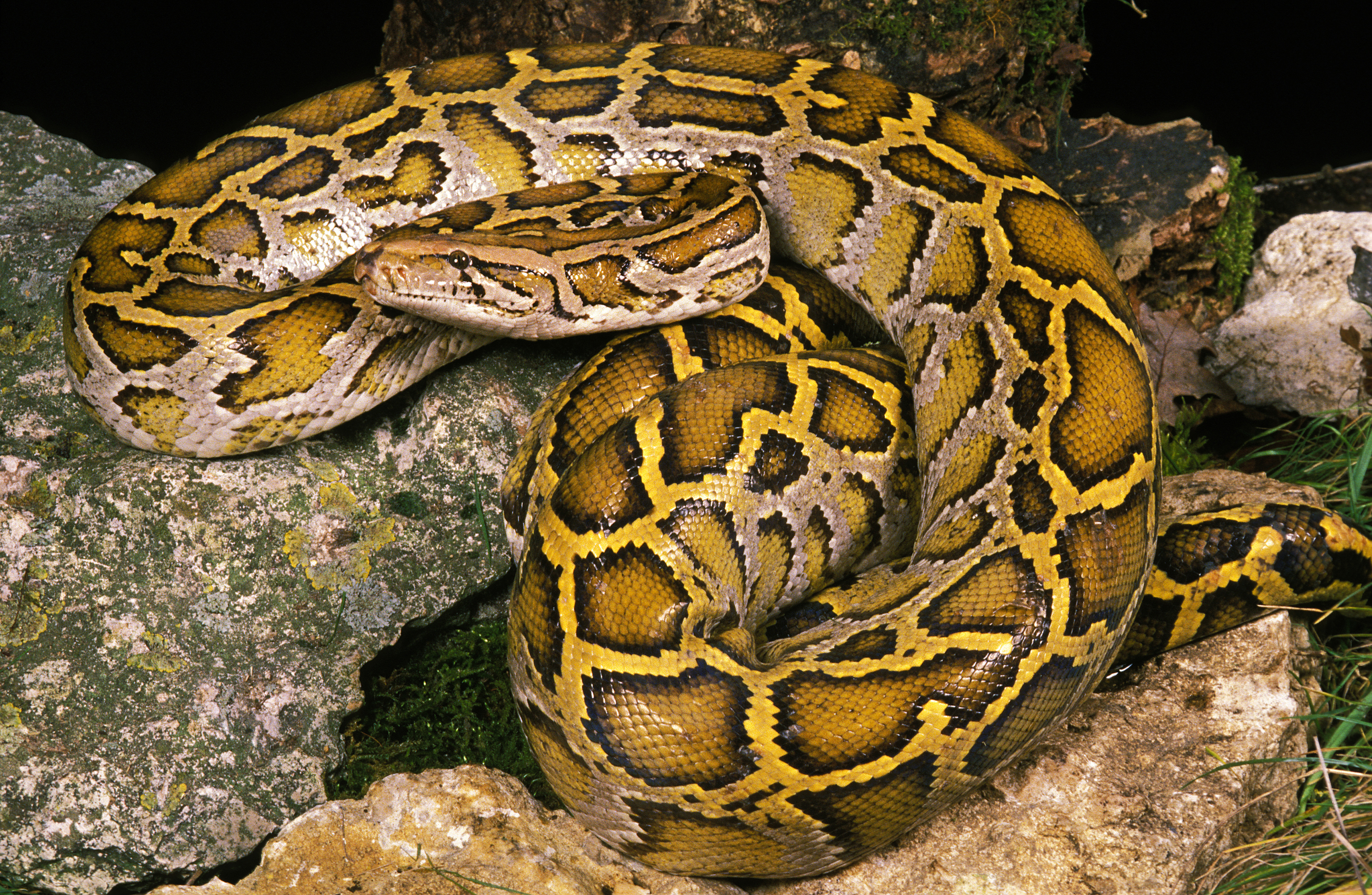Rock python is a common name used for two large, nonvenomous snakes. They are the African rock python and the Asian rock python, more commonly known as the Indian python. Pythons are constrictors—that is, they wind themselves around their prey and squeeze it to death. Pythons swallow their prey whole. A rock python may take many days to digest large prey.
Like most snakes, pythons hatch from eggs. Unlike many snakes, rock pythons care for their eggs, with the mother coiling around her clutch for months.
Both rock pythons tend to live near rivers and lakes. They are excellent swimmers and can remain completely underwater for as long as 30 minutes. Both tend to live on the ground but can climb trees. Rock pythons tend to be solitary, except during mating. They have poor eyesight and sense prey through smell and through heat-sensing pits (holes) on the scales of the lip.
The African rock python
ranks among the longest snakes alive. It can reach 30 feet (9 meters) in length or more. It is yellowish, gray brown, or gray green in color, with a ladderlike pattern of darker blotches on its back.
The African rock python lives throughout Africa south of the Sahara. The snake prefers evergreen forests and moist savannah areas.
After mating, the female lays 20 to 50 eggs. The eggs hatch in 65 to 80 days. The young take three to five years to reach maturity.
Young rock pythons feed on rodents and other small mammals. Adults may take such large prey as monkeys, crocodiles, large lizards, and antelope. African rock pythons are known to be aggressive. They will bite and constrict violently if cornered.
The Indian python
is slightly smaller. It can reach 20 feet (6 meters) long. The snake is cream to tan to yellow in color with rectangularlike patches from tan to brown bordered in black.

The Indian python lives in southern Asia, from India through China and as far south as Borneo. The snake lives in rainforests, river valleys, woodlands, scrublands, grassy marshes, and rocky foothills.
The female lays up to 100 eggs that hatch in two to three months. The young reach maturity in two to three years. Indian pythons generally prey on rodents and other mammals.
